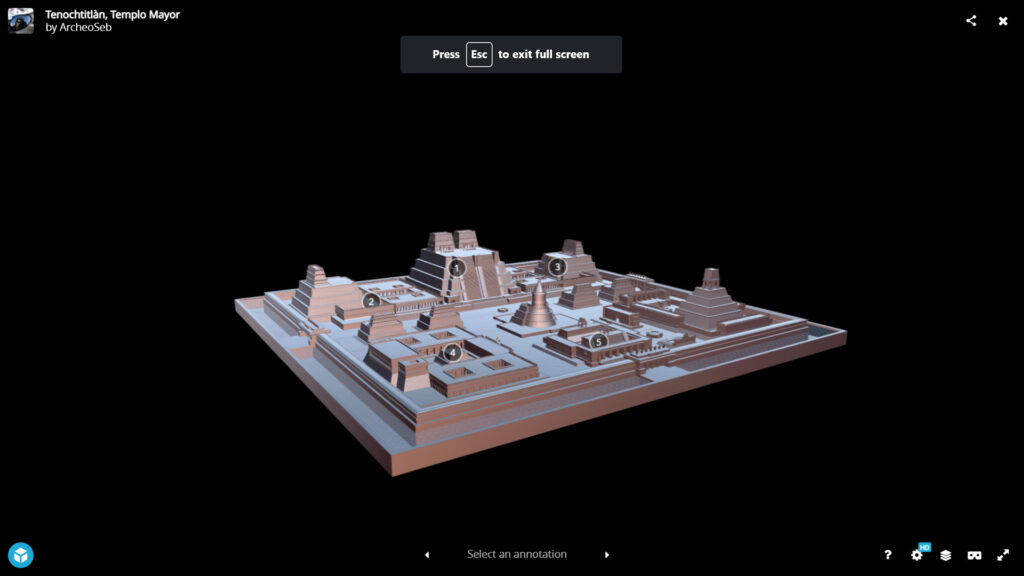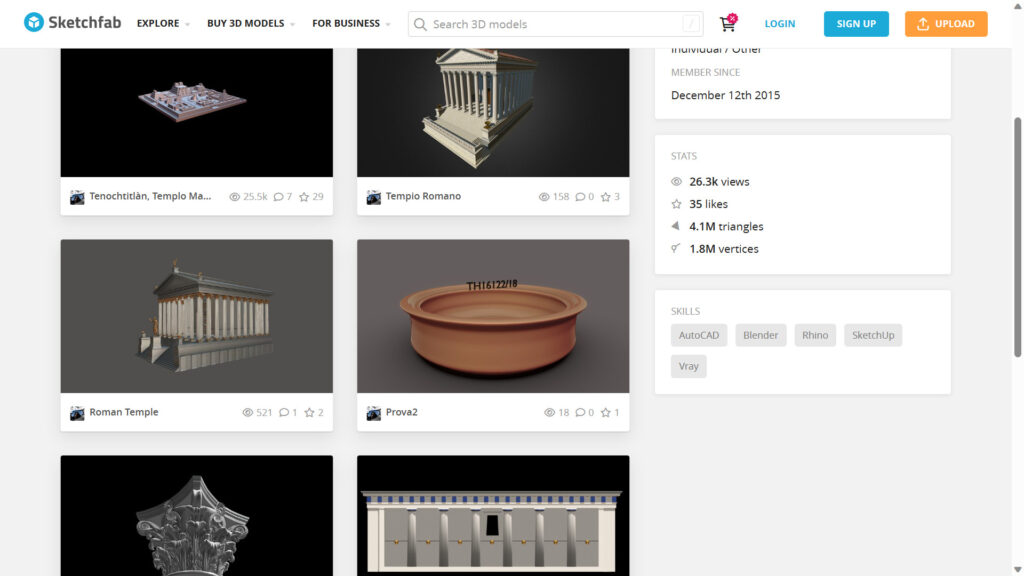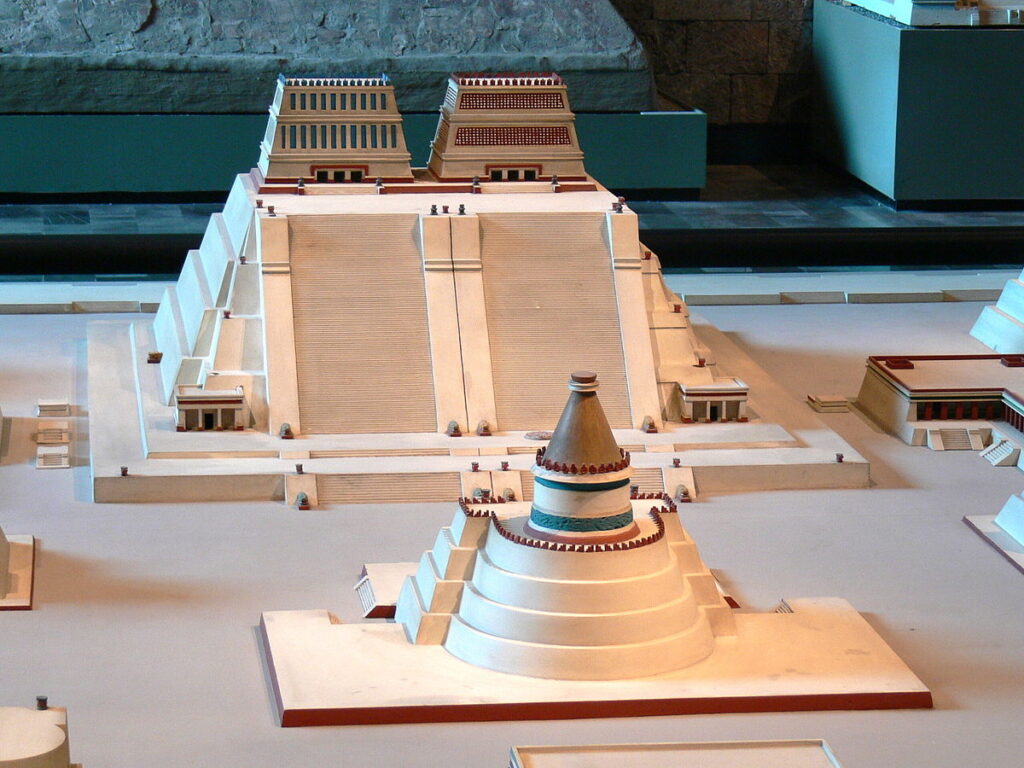Have you every wondered what it was like to live in the New World before it became a piece of the known? A project found by the World History Encyclopedia begins to answer that question with a 3D model of an incredibly important religious temple. The World History Encyclopedia is a Wikipedia-like site where anyone can edit. This specific page is by James Blake Wiener, who has his own biography page which explains his qualifications for editing this site. Mr. Wiener is the Co-Founder and Former Communications Director at the World History Encyclopedia who was trained as a world historian before being a professor. James is the writer of a page dedicated to Templo Mayor in Mexico City, which is shown in a 3D model (Figure 1). The World History Encyclopedia has a plethora of information that can be connected and found throughout the website via hyperlinks on certain words or phrases.
The World History Encyclopedia project began in 2009 by Jan Van der Crabben and is worked on by members of many colleges. This project does not seem to have an argument, per say, but from my perspective this seems to be an attempt at an unbiased informational website for historians and others who want to learn about history. The mission statement of the website is “Our mission is to engage people with cultural heritage and to improve history education worldwide.” (It can also be found here) I think that this website is the definition of Web 2.0 as it attempts to make this information very open to the public as well as having the platform be completely user generated. The World History Encyclopedia definitely addresses the new digital divide by creating a very user-friendly website with hyperlinks and visual aids. While it does not attempt to fix the connection issues it does have a section dedicated to educational outreach, which can help break the original digital divide.
The 3D model was not made by Mr. Wiener but instead made by an anonymous source known as ArcheoSeb on a platform called Sketchfab. Sketchfab is a website where anyone, with enough know-how, can design and render a 3D image of any object, building, or person. ArcheoSeb has created many other historic architectures. When comparing ArcheoSeb’s work with other renditions of Templo Mayor it seems fairly accurate. When looking at ArcheoSeb’s work (Figure 2), you can see it highly resembles the art of other historians as seen below in figure 3. While I have not fact-checked the other images done by ArcheoSeb, I can say with confidence that this image is accurate to our current knowledge of Templo Mayor.
As for the other information on the Templo Mayor page, it is found throughout the World History Encyclopedia through the use of Hyperlinks. Each page has a different contributor, however many of the Mexican Historic pages are done by Mark Cartwright. Mr. Cartwright is an author of books such as Disease and History. Mr. Cartwright is also a researcher and historian who has been editing the site since 2016. Most of the sites written by Mr. Cartwright are based around South America and Exploration. All this being said, Mr. Cartwright does not have a degree in history, only degrees in Politics. I still think this makes him a trustworthy source.
There are many things to critique about this site on, the first is the amount of information currently on the site. Many pages are simply an image with a small caption, with a few hyperlinks to other informational sites. The amount of different pages leaves a bit to be desired, as there are many terms on Mr. Wiener’s site which do not have pages with more information. I believe that the World History Encyclopedia is a good start to something that could be better, if and when more information is added. The website is definitely working towards its mission of making history more available to the public.
I believe that the website also does a wonderful job at raising cultural awareness for the people and times that they have recorded. Each section containing religious information is very clear on how it is presented and how sacred it is to the people who created it. There is no judgement in the section written by Cartwright on Huitzilopochtli, simply the facts and the ways in which the people worshipped it. I believe that both Cartwright and Wiener use sources that most historians would never dream to use in an academic setting, as I have never seen an academic article cite an image from Sketchfab.
In conclusion I believe that this is a wonderful digital history project, which while not perfect, is actively working towards achieving its goals. I believe that given the right amount of people and time this website could become a hub for historic content and information for historians all across the world to use. For a platform that is only 14 years old I think that it has plenty of places to improve to support its mission.

(Figure 1) Screenshot from the ArcheoSeb Image on Worldhistoryencyclopedia.org

(Figure 2) Screenshot from ArcheoSeb’s Sketchfab Page.

(Figure 3) Image of a Templo Mayor reconstruction by a German Historian